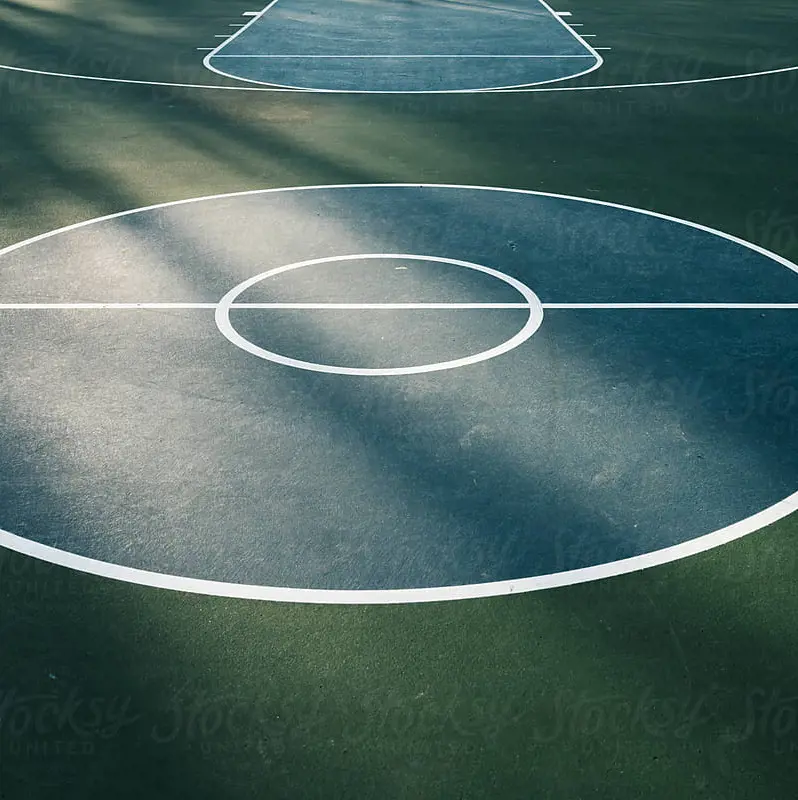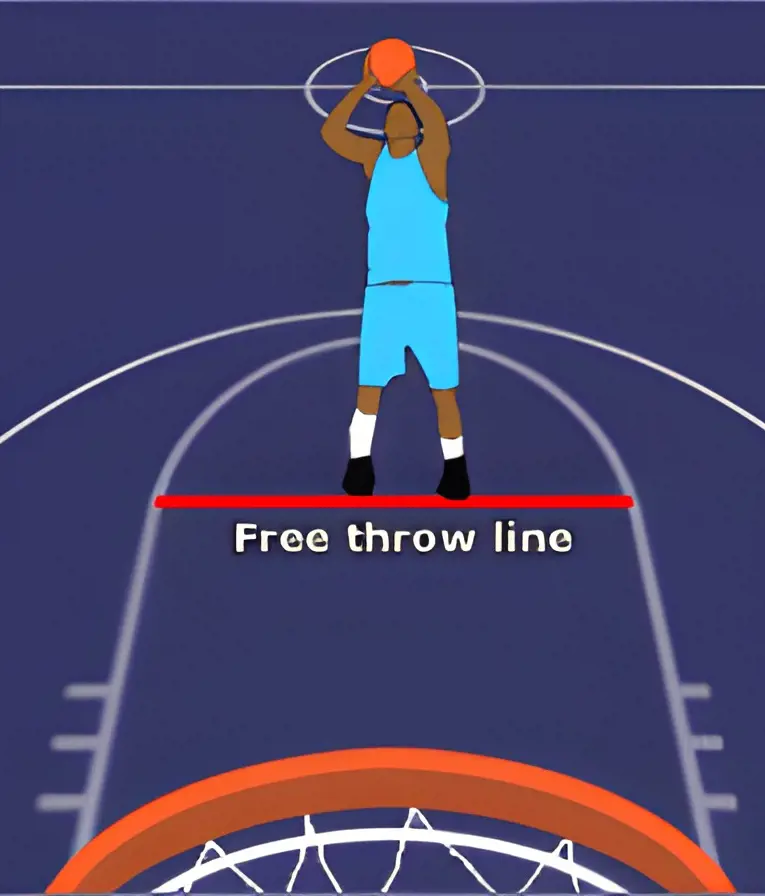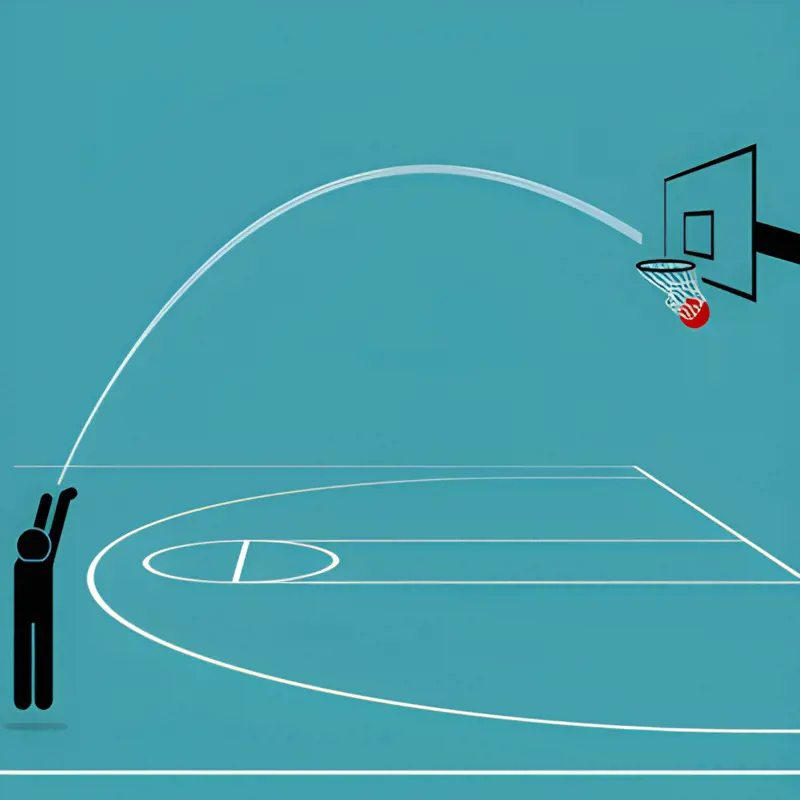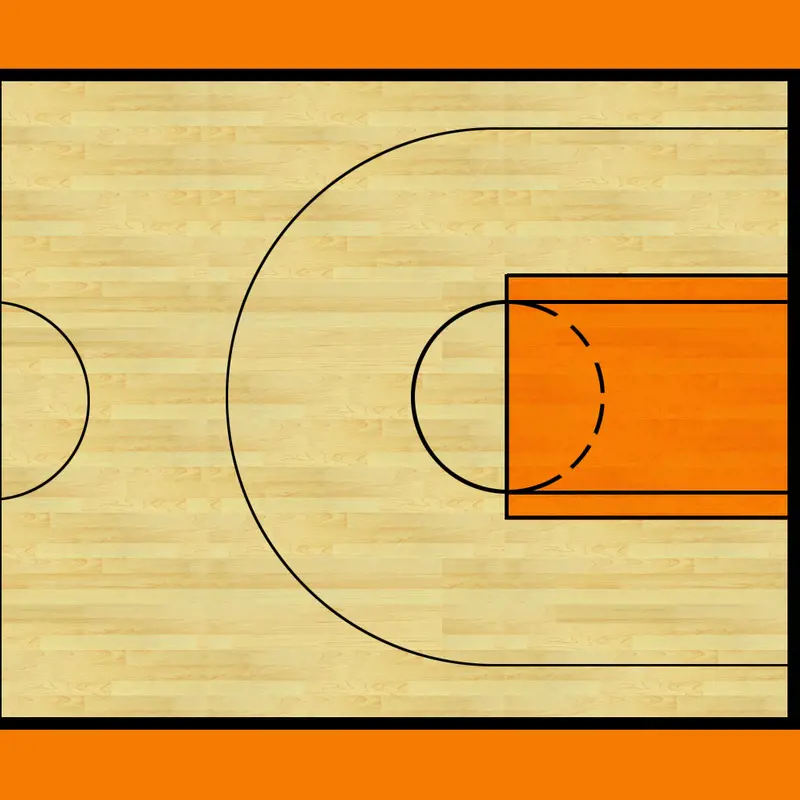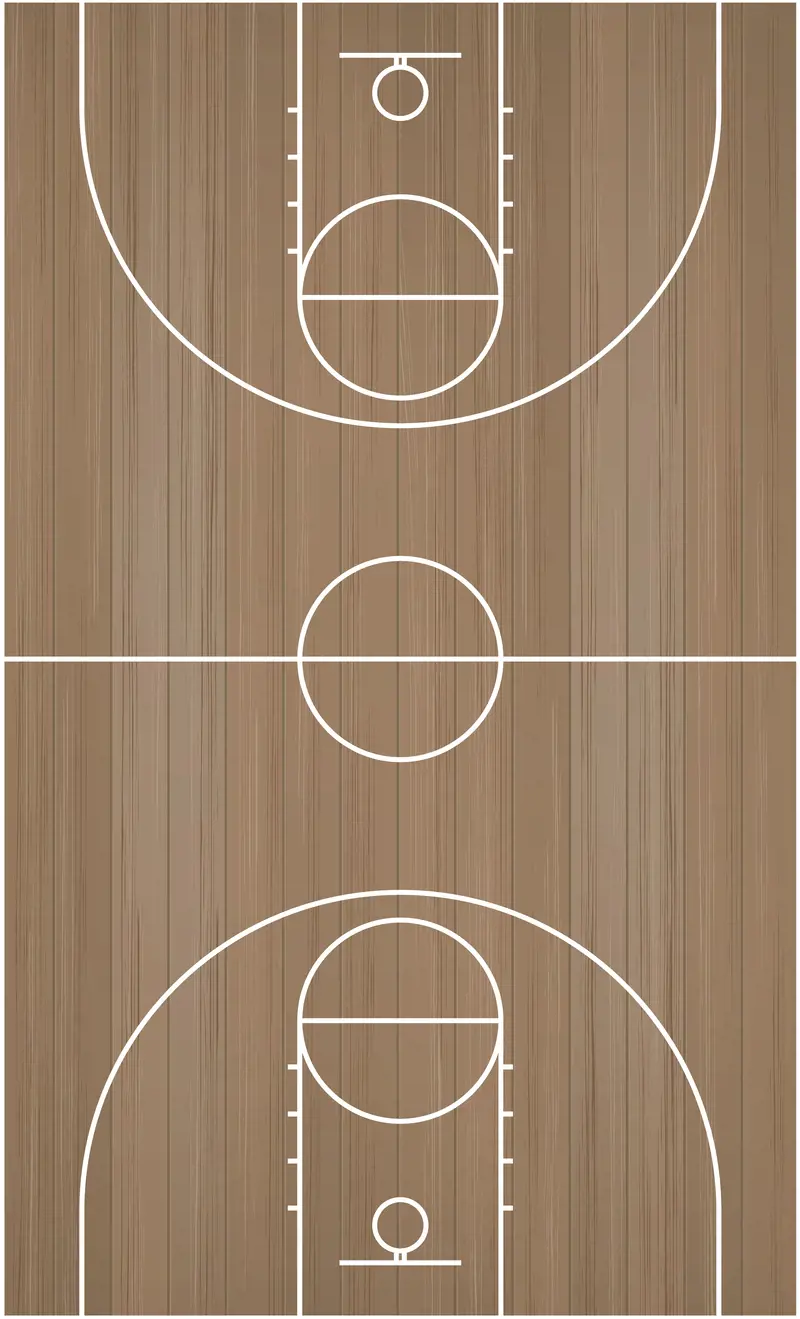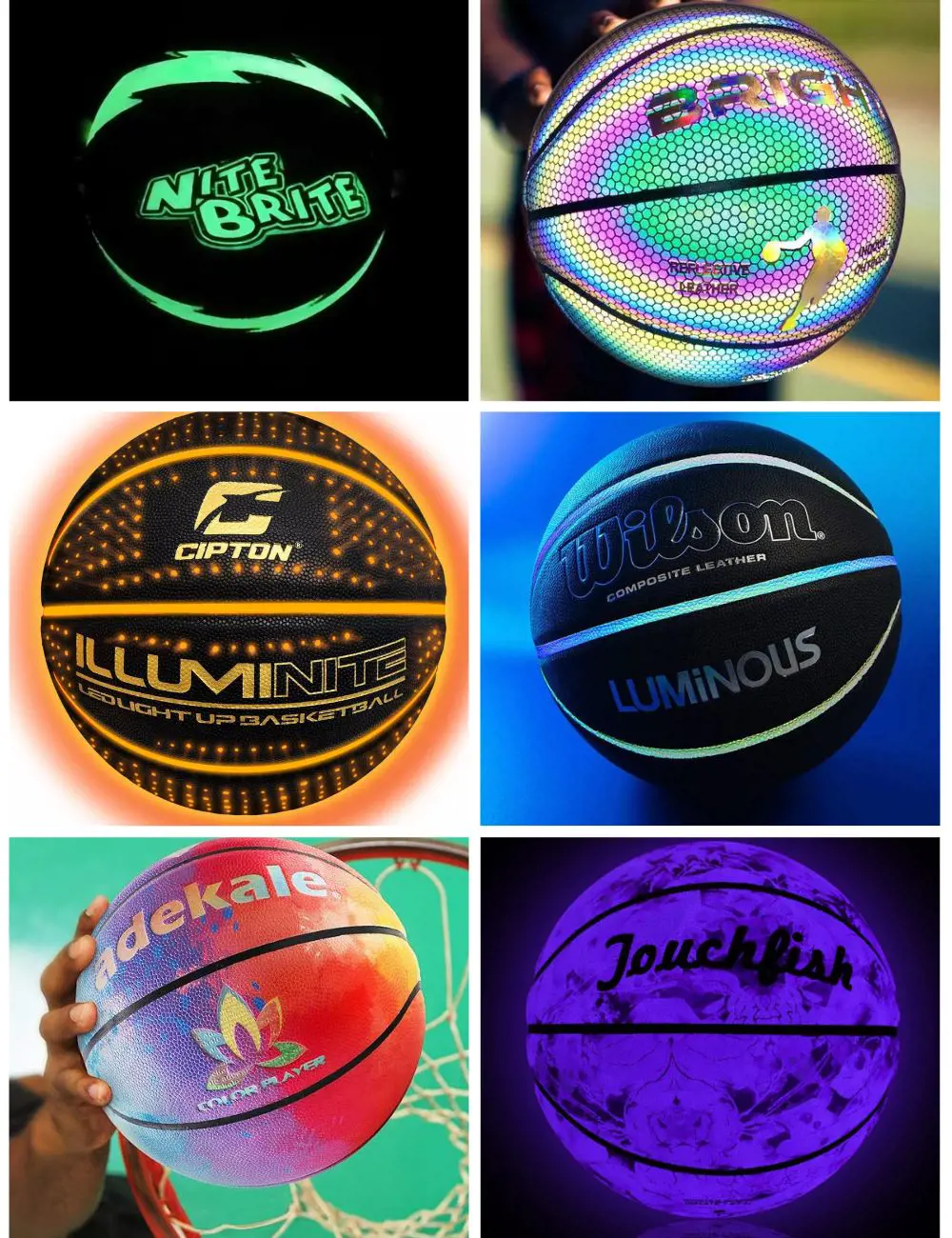Basketball Court Size
Basketball unfolds on a canvas of carefully measured lines and markings, each element defining the flow of the game and influencing play strategies.

Court Dimensions and Materials
- Length: 94 feet (28.65 meters)
- Width: 50 feet (15.24 meters)
- Area of the Court: 4,700 sq. ft. (436.64 sq. m)
- Material (Indoor): Polished wood, usually maple
- Material (Outdoor): Paving, concrete, asphalt
Standard basketball courts measure 94 feet in length and 50 feet in width, creating a defined playing area that fosters consistent competition across various levels.
Within this grand space lies the actual playing area, a battlefield of 84 feet (25.6 meters) by 42 feet (12.8 meters), where dribbling, passing, and those jaw-dropping shots truly come alive.
The basketball hoop is precisely positioned 10 feet above the playing surface, a height maintained across all levels of play.
At the center lies a circle with a 6-foot radius, where the ceremonial jump ball occurs at the start of each game.
The free-throw line, positioned 15 feet from the backboard, is a critical spot for penalty shots.



